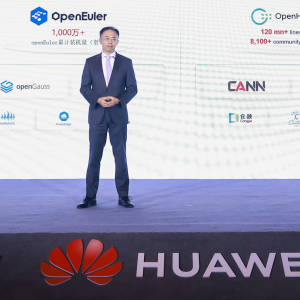
Every morning, we wake up to software. From the alarms that wake us up to the navigation guiding our commutes, even the news we scroll through, we are glancing at unseen systems full of vast lines of code. Software is no longer just a tool; it’s the environment we inhabit. And yet, for all its pervasiveness, few pause to consider how it has arrived here – or what that means for the future of technology, especially in sectors where code has quietly run the world for decades.
My career has spanned two decades of designing mission-critical systems for global financial institutions, and this sector has certainly seen its fair share of buzz around innovation and modernisation. Financial software already powers entire economies, and in the same way Alan Turing’s wartime codebreaking laid the foundations for modern computing, and COBOL standardised business logic in the decades that followed, our industry has a unique potential to continue making history.
But to understand where we’re headed, it’s worth looking back first.
Banks, in particular, sit atop a long history of layered software. Today, global financial institutions run on billions of lines of legacy code, some written half a century ago and often cobbled together during mergers. These systems were engineered for ultra-high availability to satisfy regulatory demands, but they also anchor institutions to architectures designed for a very different world. The result is what I call the ‘inheritance trap’: mainframes and COBOL programs that still form the backbone of global settlements. Even institutions spending billions on technology retire only a fraction of these systems each year.
Attempting a wholesale rewrite, the so-called ‘Big Bang’ approach, is a trap. History proves that starting over rarely succeeds in complex, regulated environments. No major software breakthrough in the last century completely erased its predecessor. Compilers, operating systems, and virtual machines each built abstractions on top of prior layers, preserving reliability while enabling new functions. That same philosophy must guide banks today: modernisation does not require abandonment but understanding.
The advantages of shielded modernisation
The solution lies in shielded modernisation. Rather than tearing out decades of foundational infrastructure, banks can virtualise access to legacy systems, stream data in real time, and enforce governed APIs to create an auditable, unified operational review. When data flows continuously instead of in overnight batches, traders, risk teams, and executives work from the same source of truth, improving accuracy and reducing latency, errors, and operational risk.
This approach decouples new applications from brittle integrations while preserving the stability that regulators prize. It allows institutions to modernise without gambling on wholesale rewrites. The modernisation process should be iterative and modular: retiring legacy components in bounded increments frees budget, talent, and cognitive bandwidth for innovation. In a compounding manner, each new layer thus strengthens the next, as real-time streaming and built-in governance ensure new capabilities increase resilience, not risk.
In practice, shielded modernisation will be the method by which banks evolve into AI-enabled enterprises, without betting their operations on outdated or untested systems.
For most of the economy, let alone “just” banks, AI represents the next frontier, but it is meaningless without a foundation of controlled, auditable data. The focus must be on modernising the plumbing first through data virtualisation, real-time streaming, and composable interfaces. This way, AI can be applied reliably and safely in regulated markets. Without this, institutions risk automating fragility instead of amplifying insight, increasing regulatory exposure rather than reducing it.
The lesson of software history is clear: progress does not come from erasing the past but from understanding, learning and building upon it. For banks, modernisation without this perspective is not just risky; it is impossible. By bridging the old with the new, financial institutions can embrace AI and deliver meaningful business outcomes, all while honouring the systems that made modern finance possible.
Robert Cooke is the CEO of 3forge






